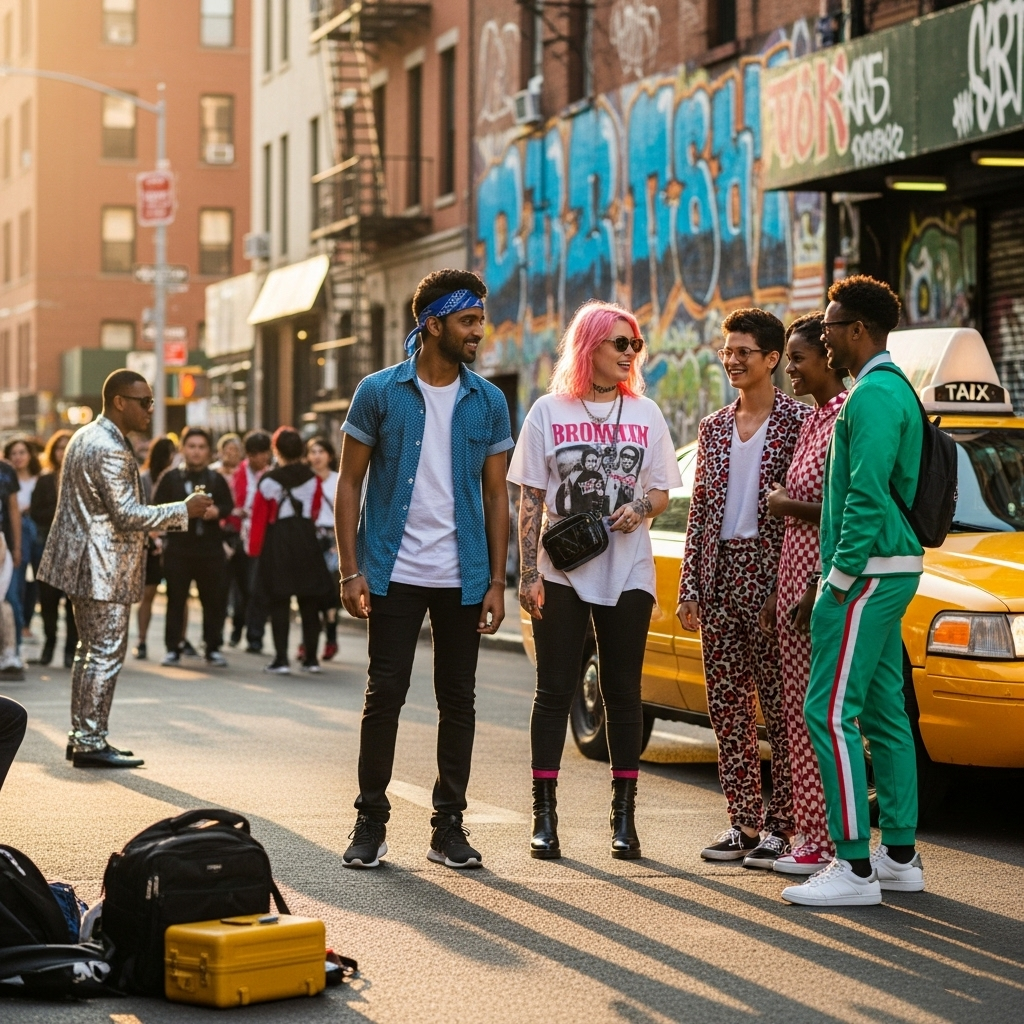For decades, the pinnacle of fashion was seen as the exclusive realm of high-end designers, grand fashion houses, and meticulously curated runway shows. Trends flowed downwards, dictated by elite tastemakers. However, in the 21st century, a powerful shift has occurred: the rise of street style. This dynamic and democratic form of fashion, born on the pavements of global cities, has become a formidable force, influencing designers, driving trends, and reshaping the very definition of what is considered stylish.
What exactly is street style? It’s the authentic, innovative, and often unexpected fashion choices made by individuals in their everyday lives. It’s not about following rules but about expressing personality, creativity, and cultural nuances through clothing worn on the streets, in coffee shops, at art galleries, or during daily commutes. Street style is intrinsically linked to youth culture, subcultures, and the diverse tapestry of urban life, where fashion becomes a lived experience rather than a manufactured spectacle. It thrives on spontaneity, accessibility, and a certain irreverence towards traditional fashion norms.
The advent of digital photography and, more significantly, social media platforms like Instagram, accelerated the global recognition of street style. Fashion bloggers, photographers, and “it” girls and boys began capturing and disseminating these looks, creating a viral loop where trends could emerge from the ground up. This democratic access meant that anyone with a unique sense of style could become an influencer, challenging the traditional gatekeepers of fashion. Suddenly, a well-put-together outfit spotted on a random person in Tokyo or Paris could inspire collections thousands of miles away.
The influence of street style on high fashion is now undeniable. Designers, who once solely relied on historical references or abstract concepts, are increasingly looking to the streets for inspiration. Runway collections frequently feature elements directly pulled from current street trends—be it oversized silhouettes, specific sneaker styles, unique layering techniques, or the repurposing of sportswear. This “trickle-up” effect has revitalized the industry, infusing it with a raw energy and a sense of realism that was sometimes missing from more esoteric collections. It’s a recognition that true innovation often springs from authentic self-expression.
Beyond influencing designers, street style also drives commercial trends. When a particular item or combination of items gains traction on the streets and goes viral on social media, demand for those products surges. Retailers and fast-fashion brands quickly adapt, producing affordable versions to meet this demand. This rapid feedback loop between consumer and producer is a testament to street style’s power as a market mover. It also fosters a sense of immediacy in fashion, where trends can emerge, peak, and evolve at an unprecedented pace.
Street style also functions as a powerful tool for cultural commentary and identity formation. Subcultures, from punk to hip-hop to skater culture, have historically used street style as a visual language to express their values, affiliations, and dissent. Today, this continues, with individuals using fashion to signal their political beliefs, social awareness, or creative allegiances. It offers a platform for marginalized voices and diverse aesthetics to gain visibility and challenge mainstream beauty standards. In essence, it’s a dynamic conversation between individuals and their environment, translated through clothing.
However, the rapid commodification of street style by mainstream fashion also presents challenges. The very authenticity that makes street style so compelling can be diluted when trends are quickly adopted and mass-produced. There’s a constant tension between genuine individual expression and the commercial imperative to reproduce and sell. Nevertheless, the inherent creativity and adaptability of street style ensure its continued evolution. As cities remain melting pots of culture and as individuals continue to seek unique ways to express themselves, the pavement will remain a vibrant runway, continually inspiring and shaping the future of fashion.


Leave a Comment
Your email address will not be published. Required fields are marked *